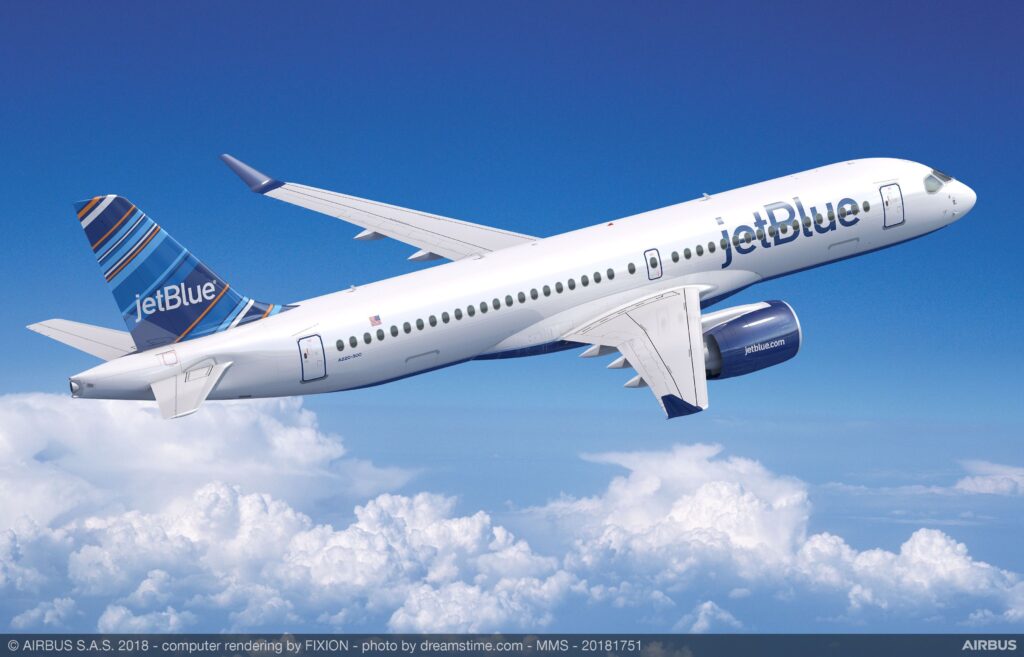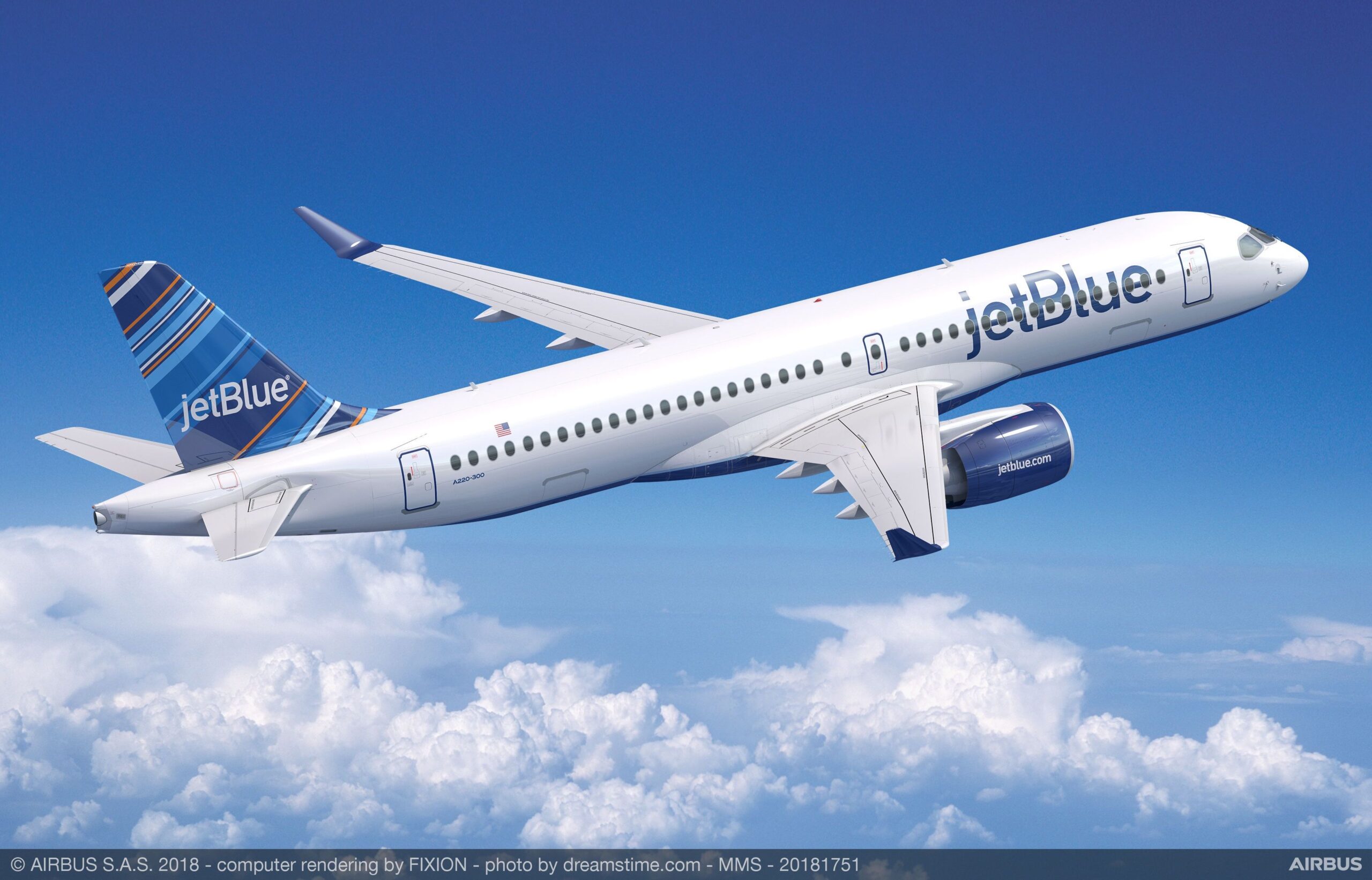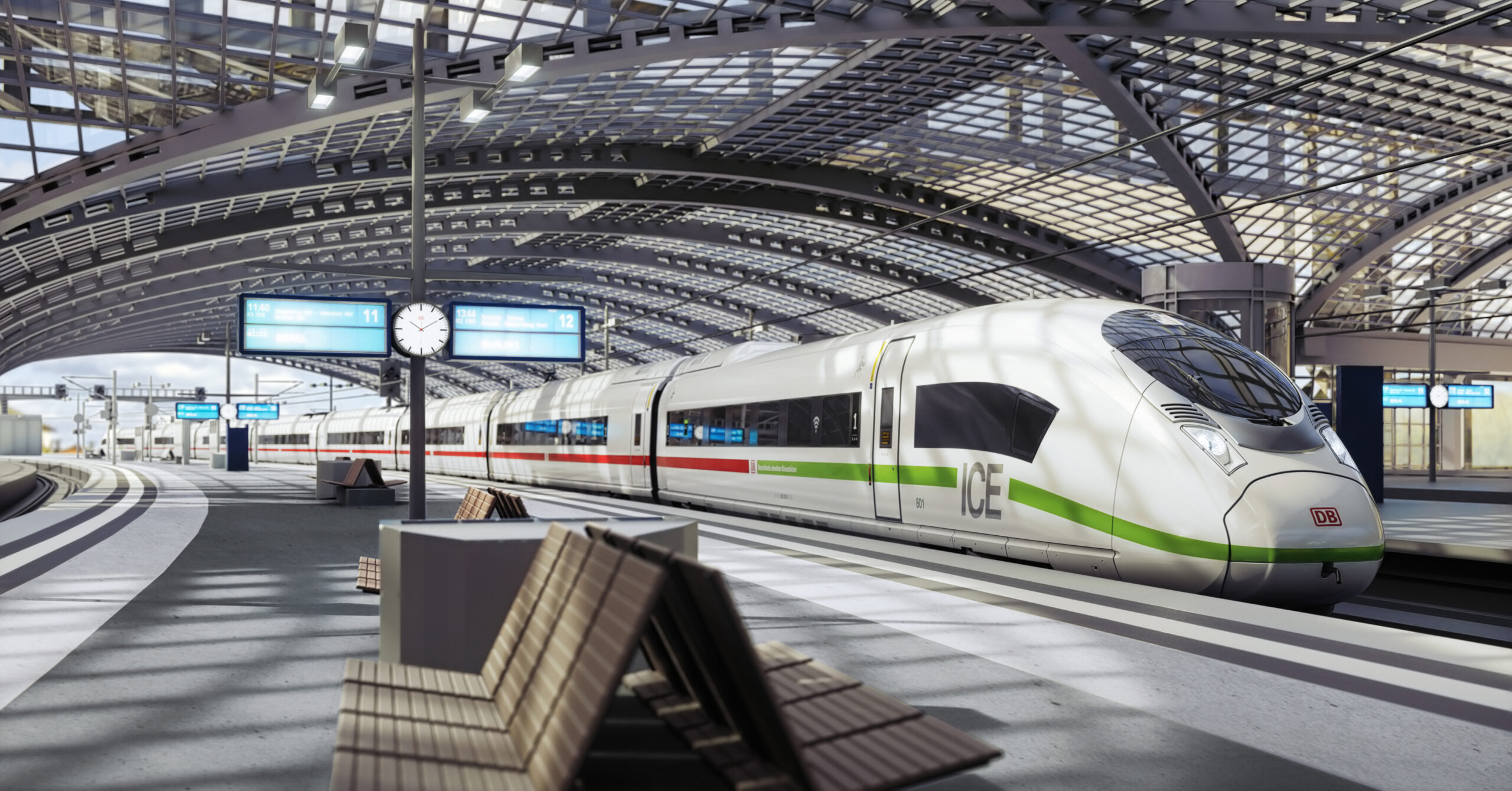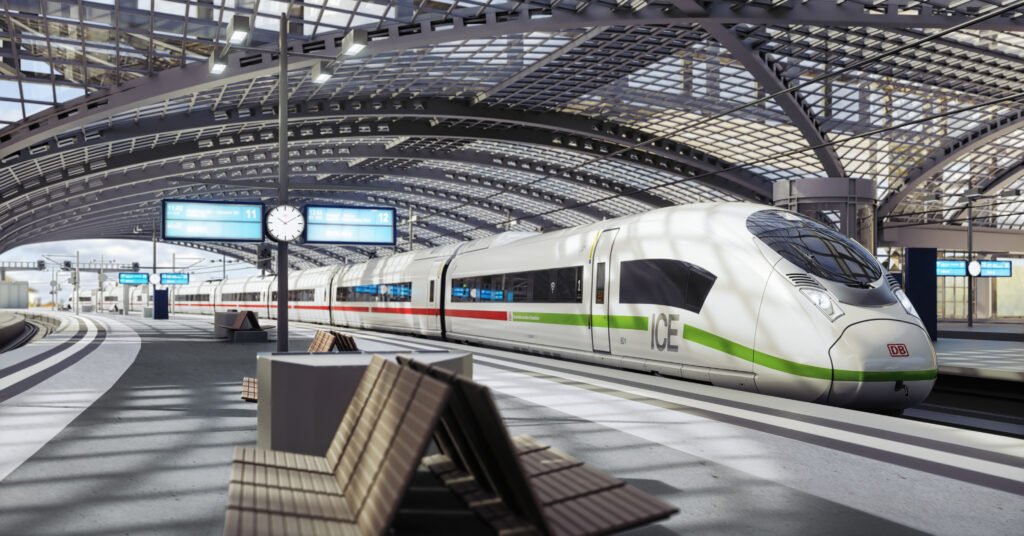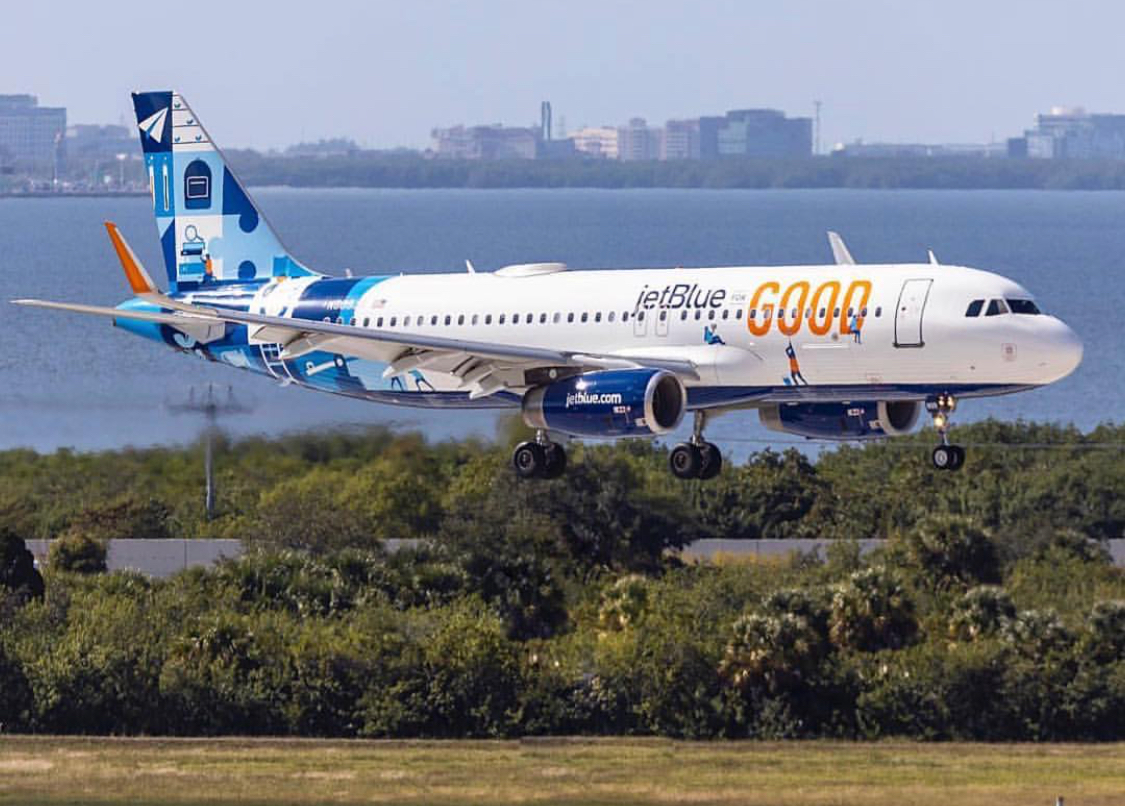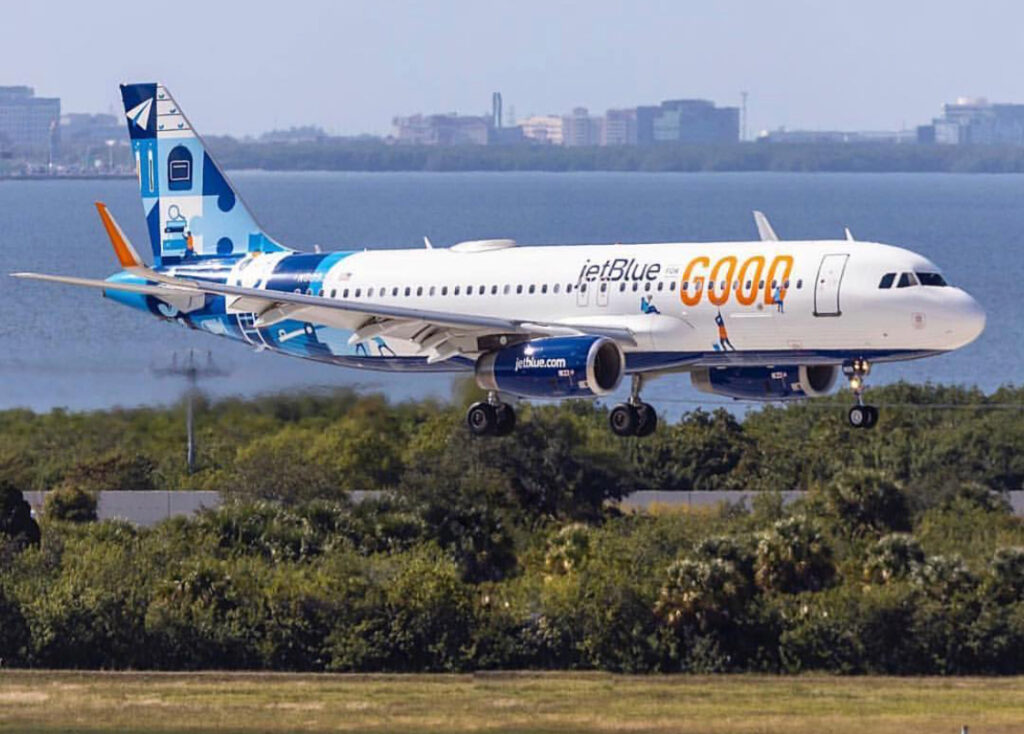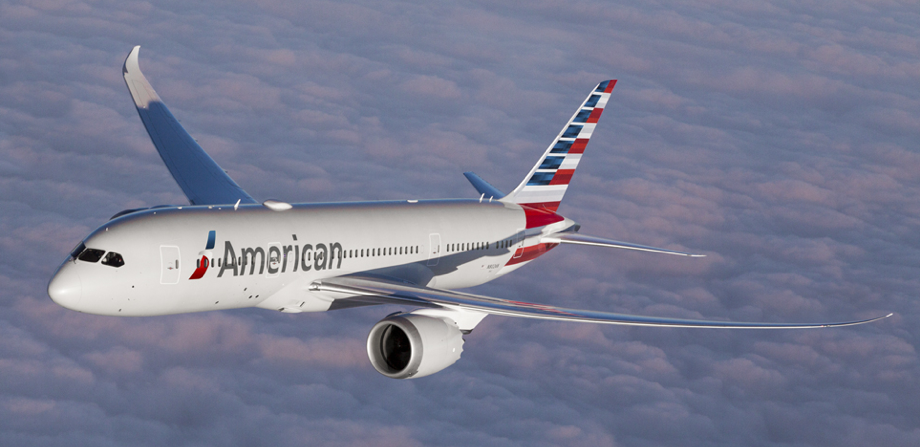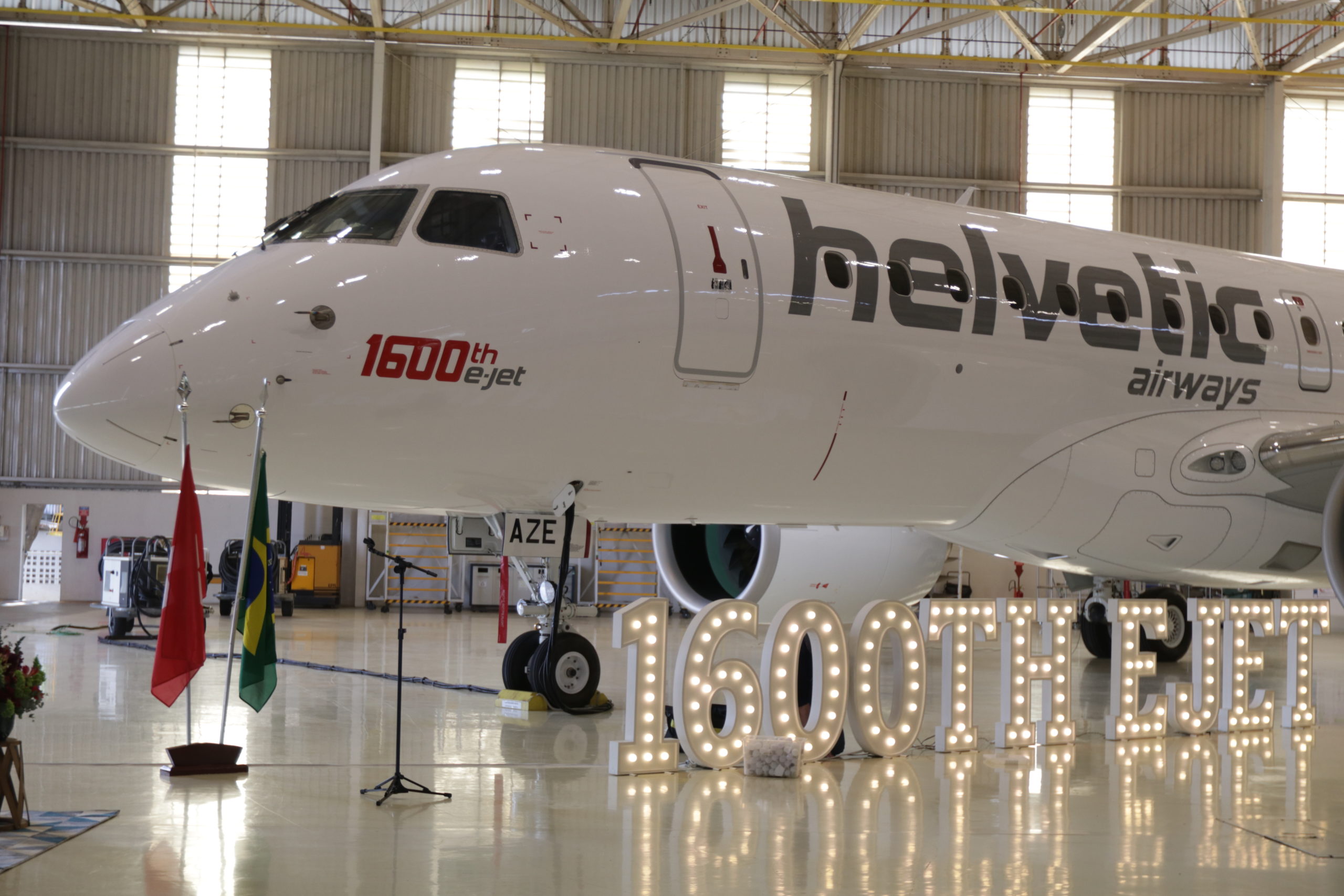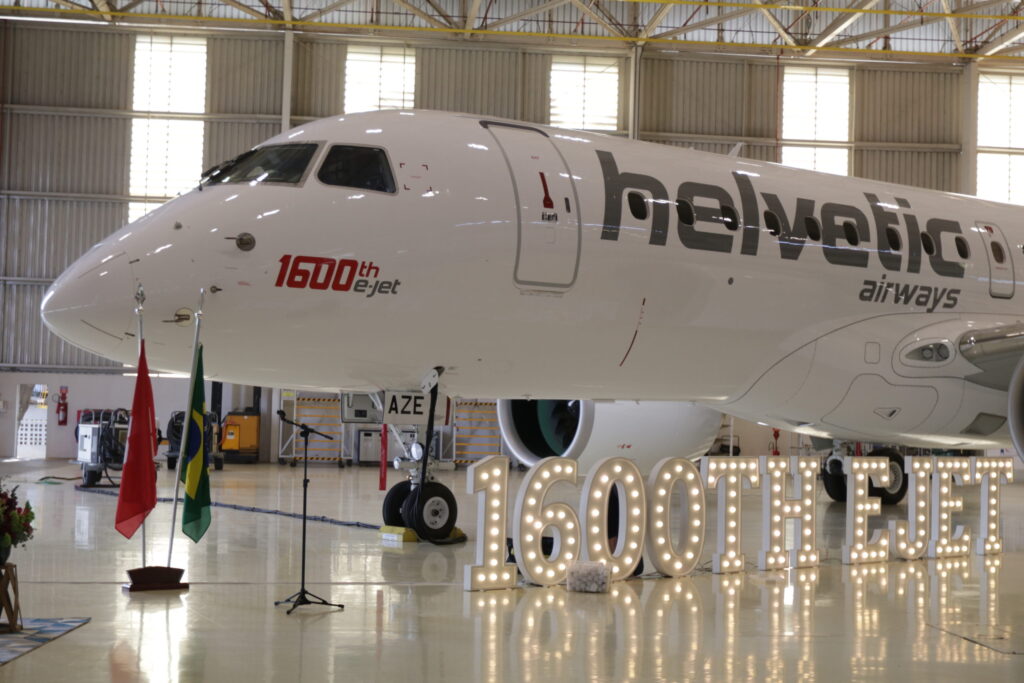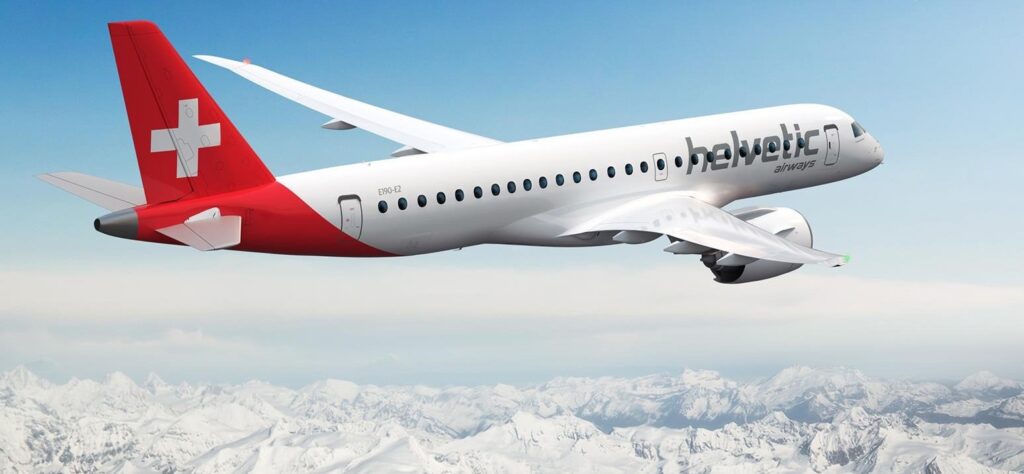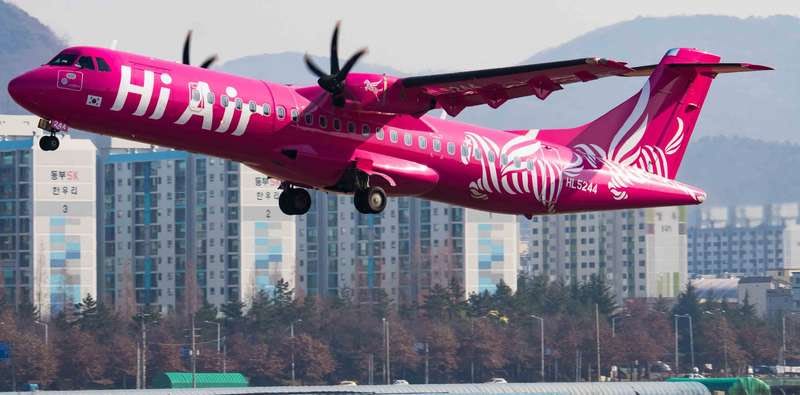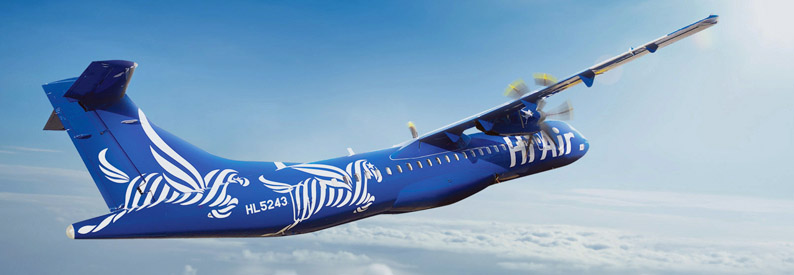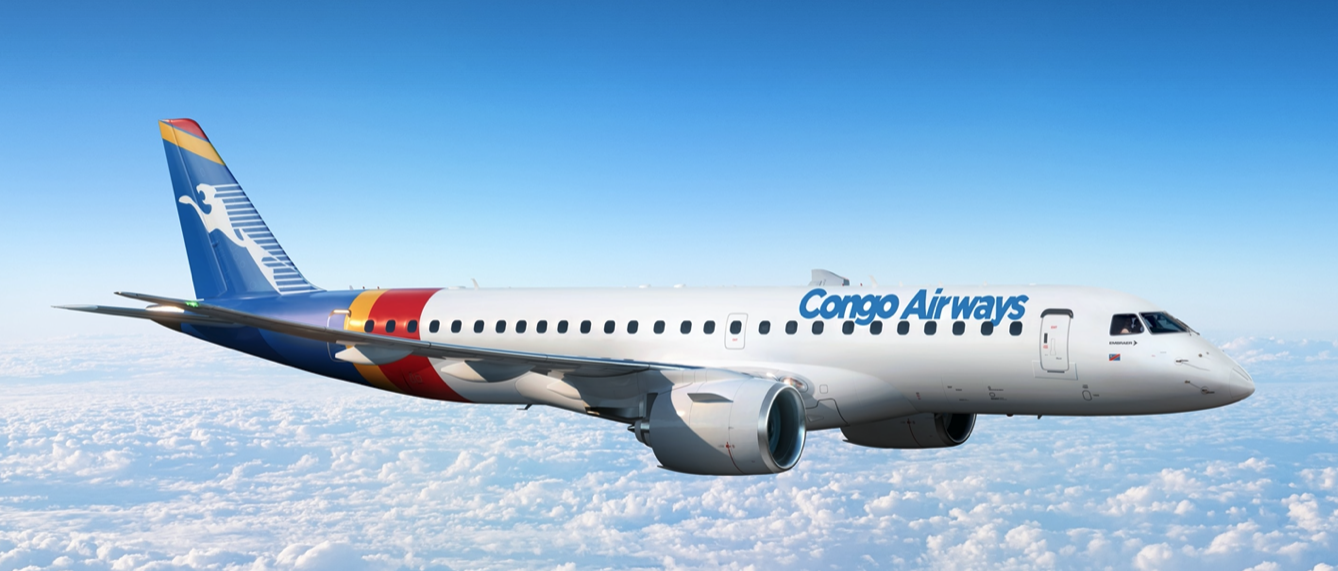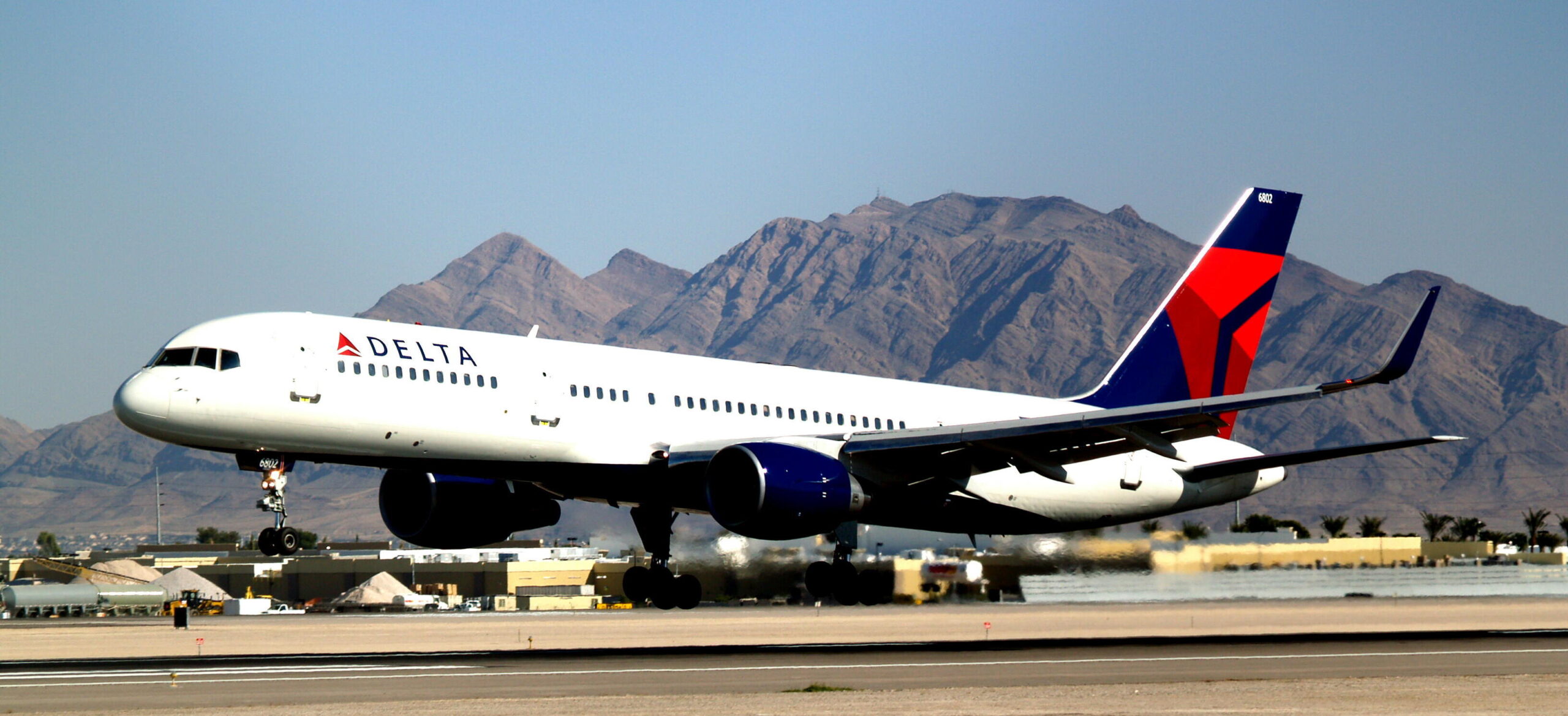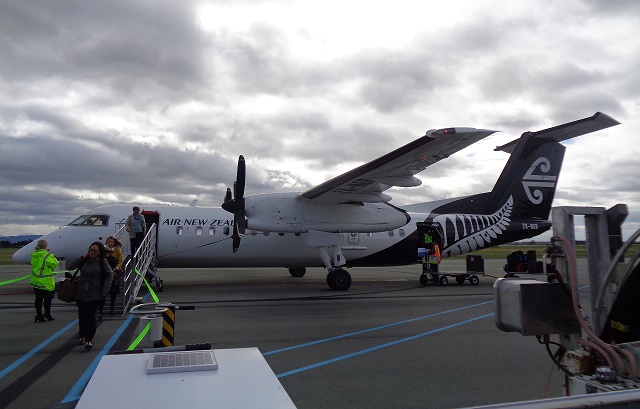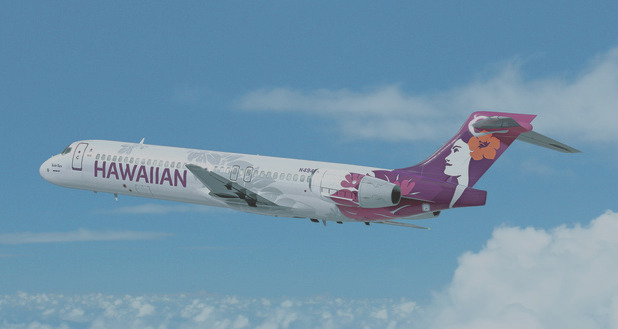– Adding Los Angeles, Las Vegas, San Francisco and Cancún, Mexico to Schedule
– JetBlue Planning to be the Largest Carrier in Connecticut by 2021
JetBlue (NASDAQ: JBLU) today announced it is expanding service in Hartford, Conn., with four new nonstop routes between Bradley International Airport (BDL) and Los Angeles (LAX), Las Vegas (LAS), San Francisco (SFO) and Cancún, Mexico (CUN)*. These routes are part of JetBlue’s strategy to add routes with high potential for leisure demand, and will set the airline up to be the largest carrier in Connecticut by 2021.
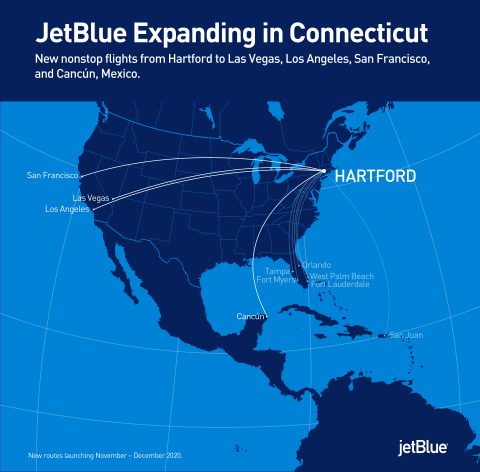
Last week, Connecticut simplified its travel advisory enabling all travelers visiting or returning to the state to provide a negative COVID-19 test result obtained within 72 hours prior to or upon arrival to avoid the state’s 14-day quarantine.
“We are excited to roll out these new routes connecting Hartford to some of our largest leisure destinations, bringing more low fares and great service to Connecticut residents,” said Scott Laurence, head of revenue and planning, JetBlue. “We are proud to play our part in support of Gov. Lamont’s economic recovery plan. We see great long-term potential for our business in Connecticut, as it becomes an increasingly attractive place to live and work. Additionally, the simplified travel advisory gives clarity to everyone who needs or wants to travel through Bradley International Airport.”
“One of Connecticut’s best competitive assets is its international airport in such close proximity to so many of our communities and employers,” said Connecticut Governor Ned Lamont. “This strengthening of the partnership with JetBlue shows once again how important Bradley International Airport is to our present and our future. More routes, and a strong international airport are key to Connecticut’s success.”
“We are thrilled that JetBlue has taken the step to strengthen their presence and route network at Bradley Airport with this impressive launch of four new cities,” said Kevin Dillon, executive director, Connecticut Airport Authority. “JetBlue is an important partner for us, and we are very pleased to see that the airline recognizes the potential of the Bradley Airport market. We are confident that our strengthened partnership will provide major benefits for Connecticut travelers, JetBlue, and Bradley Airport.”
JetBlue has built a sizeable presence in Hartford with up to 12 flights per day pre-pandemic and has been instrumental in adding new routes and lowering fares for state residents. When the routes launch in the coming months, JetBlue will have the most nonstop destinations from Bradley International Airport of any carrier.
| Service between Bradley International Airport (BDL) and: |
| Cancún, Mexico (CUN)*Launching November 19, 2020 |
| Los Angeles (LAX)Launching December 18, 2020 |
| Las Vegas (LAS)Launching December 18, 2020 |
| San Francisco (SFO)Launching December 18, 2020 |
The announcement for new Connecticut routes comes shortly after the airline revealed a lineup of two dozen all-new nonstop destinations, plus expanded Mint service in Newark and Los Angeles. Each route plays to JetBlue’s strengths in the airline’s focus cities, in Florida, Latin America and the Caribbean or on cross-country – or transcontinental – flying. Every market has been identified as one in which JetBlue anticipates increasing demand for leisure travel.
In anticipation of these recent network additions, JetBlue is readying some aircraft that have been temporarily parked. The airline is dedicated to remaining flexible, continuing to assess the airline’s network and allowing market demand to determine how long a particular route continues to operate.
